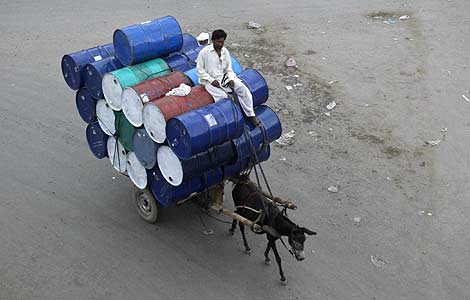Use of Tibet's mineral resources will be rational
Updated: 2011-08-13 15:50
(Xinhua)
|
|||||||||||
BEIJING - A senior local official has pledged to increase investment in exploration of mineral resources in Tibet autonomous region in the coming five years, but stressed exploitation should be carried out in a rational and orderly manner under the precondition of ecological conservation.
Tibet has abundant mine reserves but little exploration has been done so far, said Zhang Qingli, secretary of the Tibet Autonomous Regional Committee of the Communist Party of China, in an exclusive interview with Xinhua's Economy and Nation Weekly.
"We have to accelerate exploration to know what we have before planning how to make use of it," Zhang said.
Initial studies show that Tibet has China's largest chromium and copper reserves, and most of its rich iron, gold, silver, potassium, oil and natural gas reserves are unexploited.
Government statistics show Tibet holds 102 varieties of proven minerals underground that are worth about 650.5 billion yuan ($100.6 billion). The region's land and resources department has forecast the mining industry could contribute some 30 percent of Tibet's gross domestic product by 2020, compared with the current 3 percent.
Zhang said the purpose of mining is "to benefit the local people", noting exploitation should be conducted in an environmentally-friendly way, help create job opportunities for local people and raise their income.
He said no companies with a history of polluting will be allowed to mine in Tibet.
The official also suggested that the industry will be tightly regulated that unqualified companies are not be allowed to operate.
"We won't let Tibet's mine reserves just sleep there, but we also won't allow the ecology to be damaged by unregulated mining," Zhang said.
"No one is more concerned with Tibet's ecological environment than the local people," said Zhang.
Currently, Tibet has established 47 nature reserves, with a combined area of 413,700 square kilometers, or 34.5 percent of the region's land space, according to Zhang.
Related Stories
Tibet launches home appliance replacement program 2011-08-03 10:44
Tibet's first local-based airline jets off 2011-07-26 17:50
Connecting Tibet power grid is a mountainous task 2011-07-25 09:43
Xi stressed Tibet development and stability 2011-07-21 10:10
Hot Topics
Anti-Gay, Giant Panda, Subway, High Speed Train, Coal Mine, High Temperature, Rainstorm, Sino-US, Oil Spill, Zhu Min
Editor's Picks

|

|
|

|

|

|







